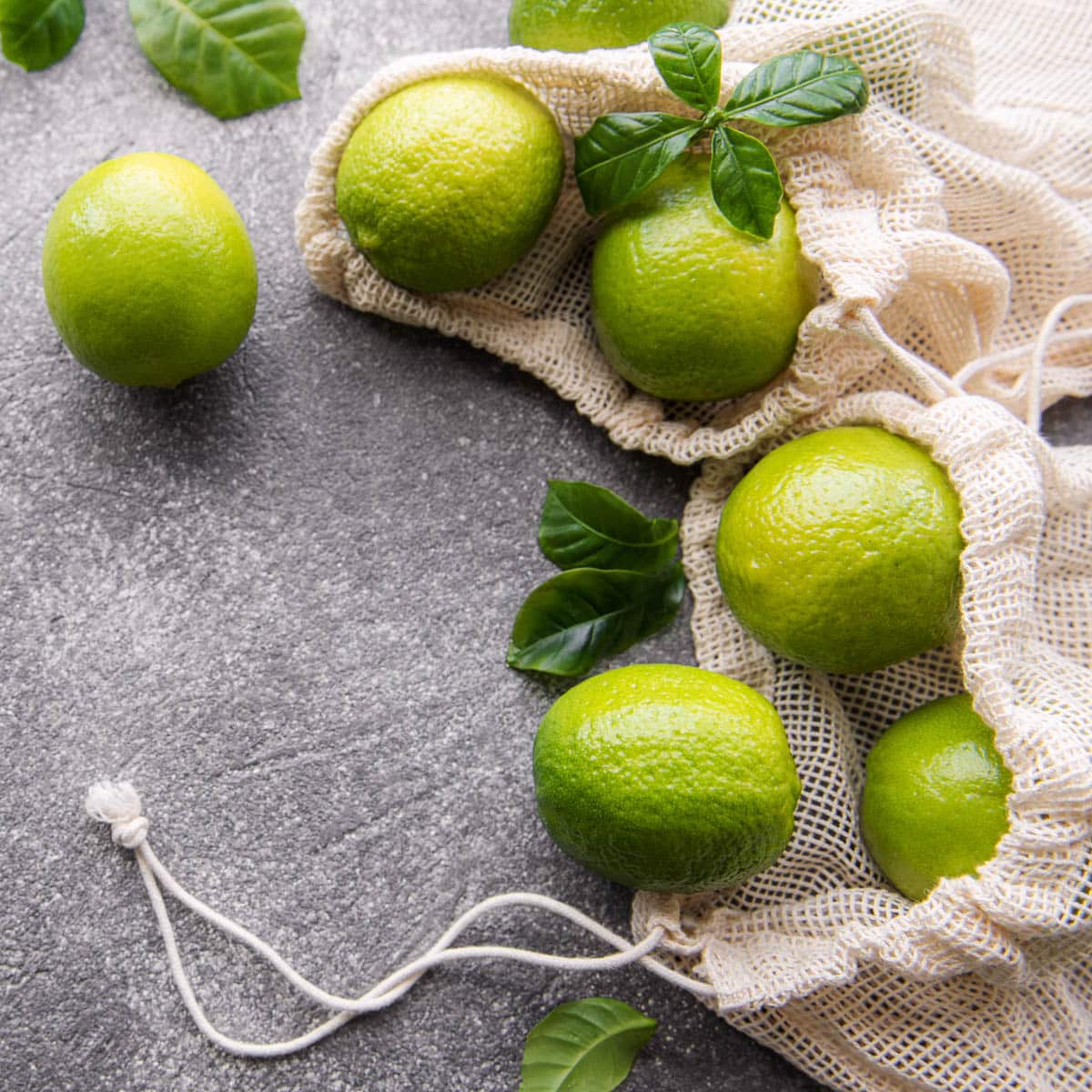How to Tell If Limes Are Ripe
Limes are versatile citrus fruits, packed with flavor and zest, lending their tanginess to a variety of foods and drinks. But to truly enjoy the full benefit of lime, it needs to be ripe.
This simple guide will take you through the steps to identify a ripe lime, ensuring you always pick the best ones!

Ripe limes have a vibrant green color, and glossy skin, and feel firm but slightly soft when gently squeezed. They should also feel heavy for their size, indicating high juice content. Unripe limes are dark green and hard, while overripe limes turn yellow/light green and become mushy.
How To Tell If Limes Are Ripe
Color
Ripe limes will have a vibrant green color, similar to the hue of a green apple or grass. An overripe lime, on the other hand, turns yellow or light green.
A lime that is still mostly dark green may not be ripe yet. So, remember, to find a ripe lime, look for a bright and vibrant green!
Skin
Examine the lime’s surface quality. A ripe lime has a glossy skin, whereas an unripe one will have a matte finish. Overripe limes often have spots or blemishes, signifying that they may be past their prime.
Firmness
Gently squeeze the lime. Ripe limes are firm but give slightly under pressure, similar to the feel of a ripe avocado. An overripe lime feels mushy, while an unripe one is very hard.
Smell
Ripe limes have a fresh, citrusy aroma that is noticeable, especially around the stem end. If the lime has no smell, it may not be ripe. On the contrary, an overly sweet or fermented smell could indicate an overripe or rotting lime.
Weight
A ripe lime should feel heavy for its size. This heaviness indicates a high juice content, which is a great sign of ripeness.
| Unripe | Ripe | Overripe | |
|---|---|---|---|
| Color | Dark Green | Vibrant Green | Yellow/Light Green |
| Surface Quality | Matte | Glossy | Blemished |
| Firmness | Very Hard | Slightly Soft | Mushy |
| Weight | Light for Size | Heavy for Size | Variable |
It is important to also be able to identify if your limes have gone bad so that you don’t end up using them past their prime. You can also learn how to tell if lemons are ripe or bad as well.
How To Store Limes
Storing limes is crucial to keep them long-lasting. You can learn more in my guide on how to store limes but here is a quick overview for you.
- Room Temperature Storage: Perfect for limes that will be used within a week. Store them in a cool, dry place away from direct sunlight.
- Refrigeration: If you plan to use the limes within a month, store them in the refrigerator, preferably in the crisper drawer.
- Freezing: For longer storage, consider these freezing methods:
- Whole Limes: Freeze them in a freezer bag for future juicing. They can last up to a year.
- Juiced Limes: Freeze the juice in an ice cube tray. Once frozen, transfer the cubes to a freezer bag. Perfect for when you need a small amount of juice.
- Zested Limes: Freeze lime zest on a baking sheet, then transfer to a freezer bag. Ideal for recipes calling for zest.
- Sliced Limes: Freeze slices on a baking sheet and then transfer to a freezer bag. A refreshing addition to drinks!
If you are interested in learning more about other citrus fruits, check out our guide on how to store citrus fruits.
Frequently Asked Questions About How To Tell If Limes Are Ripe
Conclusion
Choosing a ripe lime doesn’t have to be a guessing game. By using the visual and touch tests, you can ensure you’re getting the juiciest, tangiest limes every time.
So next time you head to the market, remember these simple tips, and you’ll be a lime-selection pro! For more detailed information on safe food handling and storage, you can check out the FDA’s guidelines to ensure your limes stay fresh and safe to consume.

Online Cooking for Beginners Course